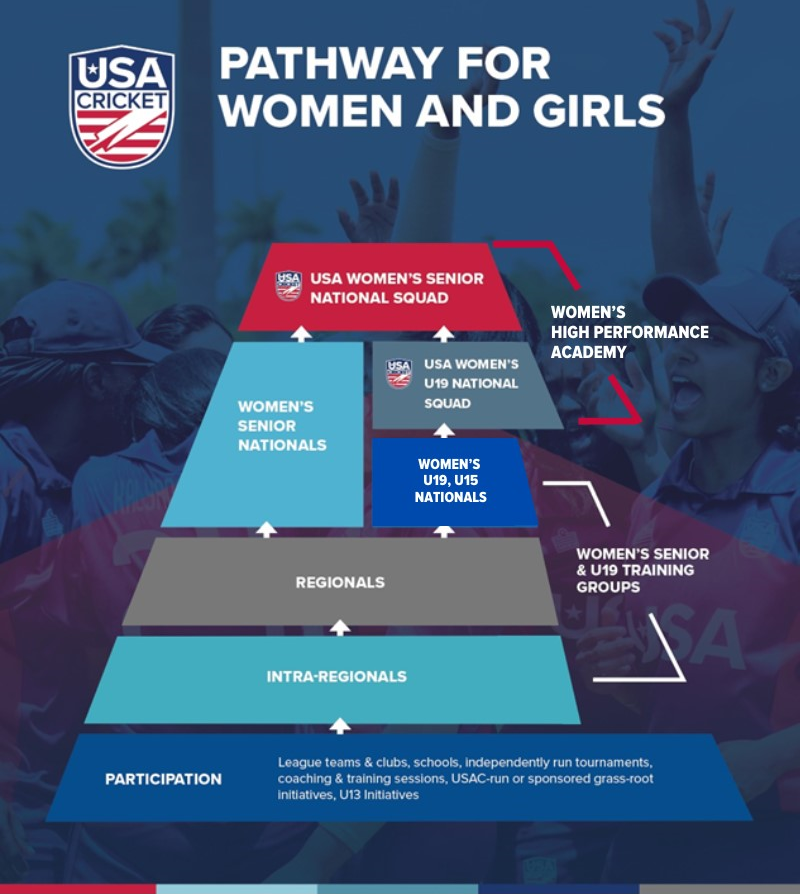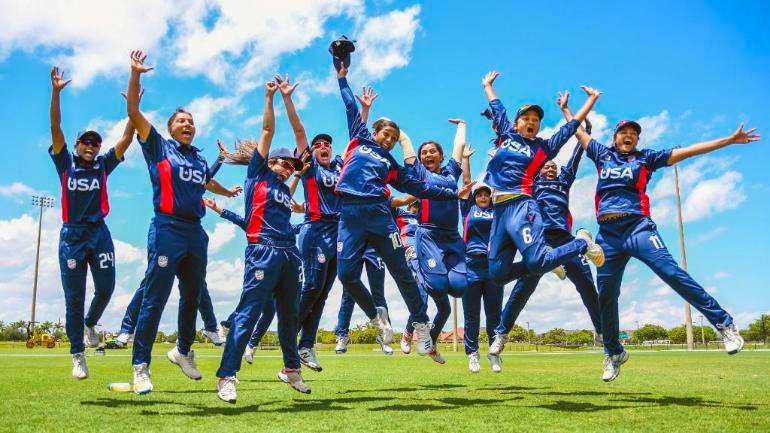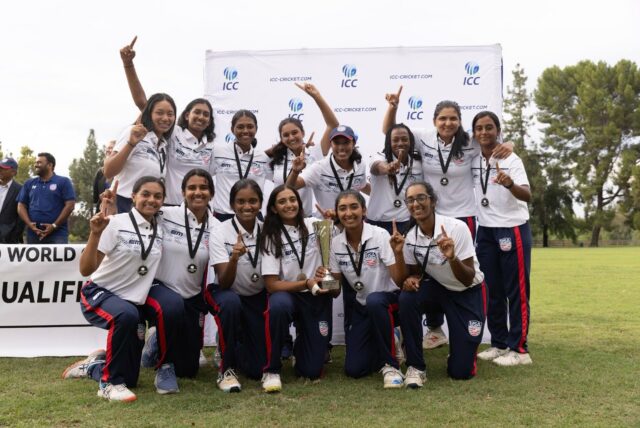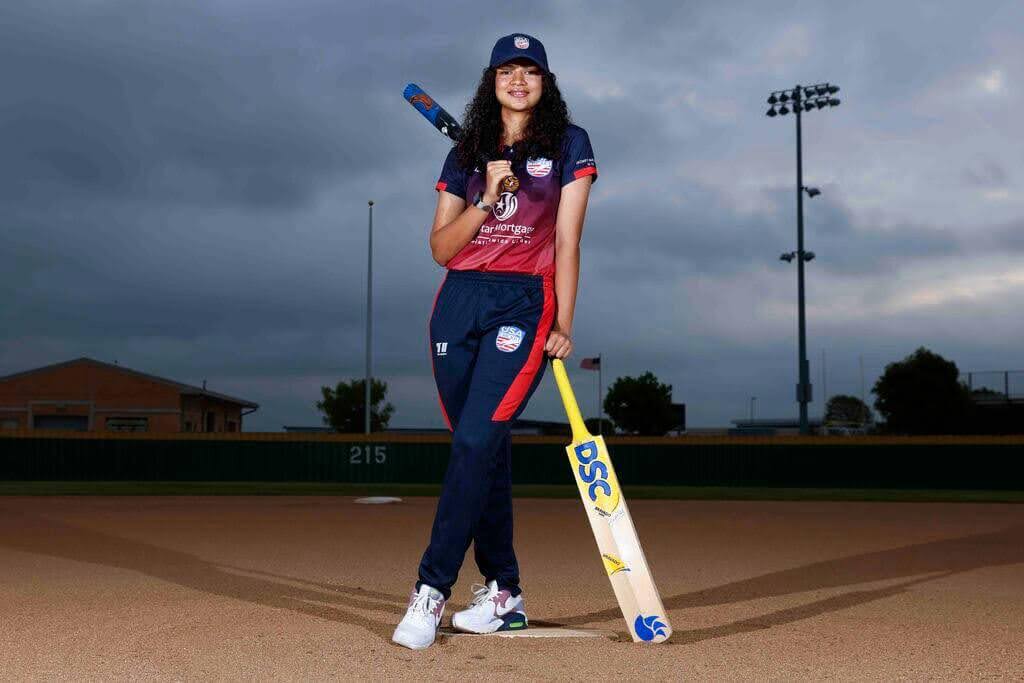Not too long ago, cricket in the USA was considered a niche sport for expat players and fans. Today, the game is experiencing a dynamic shift in its profile as a burgeoning sport in the US.
Cricket in the USA has achieved a few milestones in its quest to become a major sport in this country. Next year, America is set to host the men’s T20 World Cup for the very first time; the under 19 men qualified for the 2024 U19 World Cup; Minor and Major League Cricket for men was launched, and the women’s game is beginning to take root with its domestic pathway.
The introduction of the domestic pathway for women’s cricket just three years ago has played a pivotal role in shaping the structure of the sport. It offers players a tangible goal to strive for throughout the year.
Before this domestic pathway was formed, several players had been carrying the torch for women’s cricket with very little resources available. To understand the transformative impact of the domestic pathway, it is important to reflect on the history of women’s cricket in America.
The Originals “OGs”: Pioneers of the game in the US
Former USA player, Akshatha Rao, began her cricketing journey at the age of 22, during an office tournament in India. Her knack for getting wickets with her spin-bowling propelled her into an academy, marking the beginning of her cricketing journey. Hailing from Mumbai, she learned the nuances of the game in her early childhood, by playing gully cricket with a rubber ball.
Reflecting on her debut for the USA, Rao narrates a historic moment. “On the very first ball I bowled in an ICC tournament, I picked up my first international wicket against Bangladesh. It was surreal and the dream-start any international bowler can dream of,” said Rao.
But that memorable wicket came with its challenges. Around her debut in 2011, she recalls the absence of a structured pathway for women. In 2011, she and all other women in the country, participated in a trials event in their local city before being selected to represent a team at the national championship in New York. From this national event, the women’s national squad was selected.
To make up for the gap of playing opportunities in her local city, Rao played in men’s leagues alongside her husband in California. She wasn’t given many opportunities to play but enjoyed the challenges as they came.
Rao’s favorite moment playing for the country is at the World Cup qualifier against Zimbabwe in 2021. Despite the game ending in a loss for the USA, the intensity, fighting spirit, and the loud crowd created an unforgettable experience. She reminisces about a similar scenario ten years earlier against Zimbabwe, where the USA displayed the same fighting spirit but emerged victorious over the full member nation.
Former USA Vice Captain Shebani Bhaskar’s introduction to cricket involved playing multiple sports until she discovered women’s cricket in Kolkata. Unlike her American teammates, Bhaskar had the benefit of playing women’s under-16 domestic competition in her home state, Tamil Nadu, before making her debut for the USA in 2011.
Stateside, Bhaskar notes the increase in homegrown talent and cricket being played in schools. “While the current players may lack experience, their youth brings immense potential for the future,” said Bhaskar.
“The lack of women’s tournaments, and players not convening often presented a huge challenge for us to get better. The introduction of the domestic pathway helped us quite a bit. The team had limited time together and only played together during international tournaments in the past, but now these players come together often to play in and prepare for games within the pathway,” said Bhaskar.
Bhaskar’s favorite moment playing for the country revolves around the victorious game against Zimbabwe in 2011, where she scored 72 and took the last, match-winning wicket. Her outstanding debut performance for the USA earned her the 2011 New Innings Foundation Newcomer Award. Among Bhaskar’s list of favorite cricket moments is her captaincy debut against Queensland XI, where the team defended a meager 78 runs.
Rao and Bhaskar echo the positive influence of the domestic pathway on women’s cricket. According to Rao, “the pathway has brought structure, opportunities, and healthy competition to women’s cricket in the USA.” She also appreciates the long domestic season which provides players multiple opportunities to perform.
Bhaskar highlights how the pathway has also brought in a younger crowd, offering aspiring players a clear trajectory to follow throughout the year.
From 2016 to 2018, ICC Americas managed cricket in the USA. Players like Rao and Bhaskar attended “combines” to try out for the national team. Though it was not yet a domestic pathway, it provided more components for selections.
The combines were typically held over one weekend in New York and one weekend in California and players from anywhere in the country could try-out regardless of talent or experience. The combines involved matches and fitness testing. But if a player was out sick or injured during that weekend, they were typically out of luck until the following year.
Next-generation: Taking the game to the next level
The women players today began playing cricket at a much younger age than their predecessors. Seventeen year-old Aditi Chudasama’s cricketing journey began when she was 10 years old, inspired by the 2015 World Cup. She plays for the New Jersey Lady Eagles in the intra regional league and represents the East in the regional and national tournaments.
Chudasama first represented the USA under 19 women in 2022 against Cricket West Indies and went on to represent USA in the under 19 Women’s T20 World Cup in January 2023. She made her senior team debut three months ago in Los Angeles against Argentina.
Chudasama enjoys having a structure that gives the girls something to aspire to and train for, although the structure has its challenges. “The pathway provides a great opportunity for girls to come together and display our talents but the selection process is based on a limited number of games at the national level which gives us very little room for error,” says Chudasama.
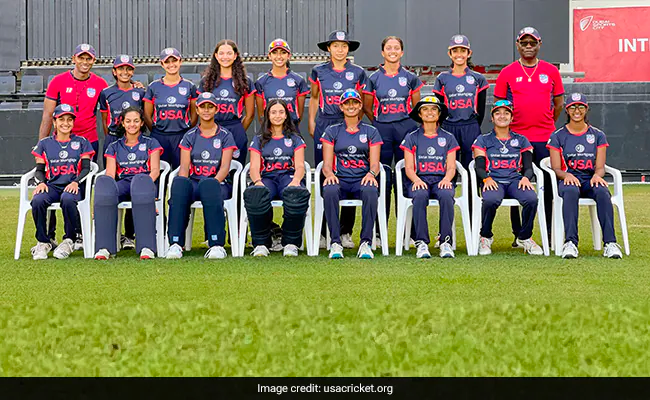
Gargi Bhogle, USA national player, began her journey into cricket at the age of 14. She represents the SoCal Stars in the intra regional league and represents the West in the regional and national tournaments.
Aside from the cricketing benefits of the domestic pathway, Bhogle appreciates the many friendships, mentorships and bonds that have formed across teams. “I love that we all get to come together from coast to coast to play cricket. Some of my best friendships started in the domestic pathway. It [the pathway] is clear how we make it to the national team and it’s great to see the competition getting better every year,” says Bhogle.
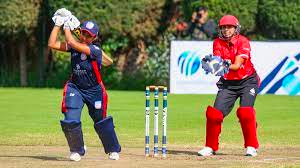
Gargi Bhogle during the Olympics video shoot at the Dubai International Stadium. Photo Credit: ICC Cricket
The Future of Women’s Cricket in the USA: A Next-Gen Vision
Players like Chudasama and Bhogle express optimism about the future of women’s cricket in the USA. They foresee substantial growth in the talent pool, particularly improvement in fitness and fielding. The support from senior players has played a crucial role in encouraging the youth, setting the stage for a promising future.
Despite the broader challenges for cricket in the USA, both players look forward to a stronger and more stable foundation over the next few years. A stable platform is critical for the sport to grow and certainly for the evolution of women’s cricket and success in the USA.
Our OG players have not only paved the way for the next generation but have also created a platform that allows young players to reach heights never thought of before. The new domestic pathway not only adds fuel to the passion of young players hoping to play for the country but also ensures that the sport continues to ascend to new levels.
